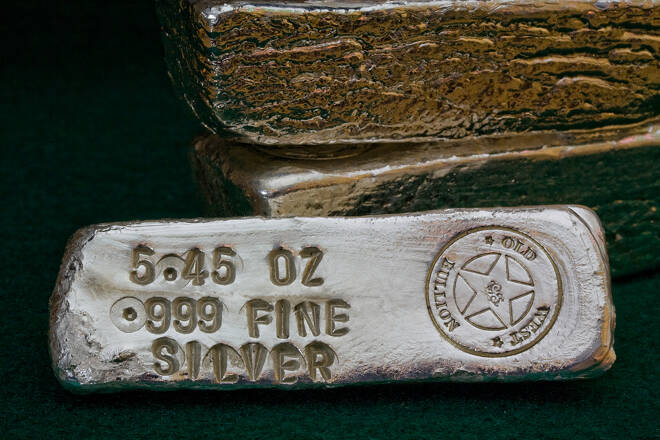Advertisement
Advertisement
Silver Prices Slid as the Dollar and Yields Extend Gains
By:
Silver prices move lower despite that the IMF released its outlook signaling reduced economic growth and rising inflation.
Key Insights
- Silver prices eased as benchmark yields rise.
- Treasury yields continue to climb amid rising inflation and tight monetary policy.
- Oil prices fell as IMF reduced growth forecasts and expressed inflation concerns.
Silver prices declined today as the dollar and benchmark yields strengthened despite rising inflation concerns. The ten-year yield hit its highest level since 2018 near 2.93% today as rising inflation has caused a bond sell-off. This situation has buoyed yields.
Gold prices fell as the dollar strengthened as investors prepared for more Fed rate hikes to combat spiraling inflation. Oil prices moved lower in volatile trading despite the ongoing global supply shortage as the IMF increases concerns over inflation and reduced economic growth expectations.
Housing starts unexpectedly increased by 0.3% in March to a seasonally adjusted 1.793 million units. Building permits rose 0.4% to an annual rate of 1.873 units last month.
Higher mortgage rates and supply chain disruptions are making home buying more difficult for buyers. However, the low housing supply will continue to underpin housing starts this year.
Technical Analysis
Silver prices gave up yesterday’s gains, dropping to the low $25s level. Despite elevated inflation and global supply issues due to the Russia-Ukraine War, silver prices are reversing lower. This could be a short-term move reversed by investors buying the dip or a shift to negative momentum.
Support is seen near the 50-day moving average of $24.85. Resistance is near the $26.40 level. Short-term momentum turned negative as the fast stochastic had a crossover sell signal.
The medium-term momentum is positive but facing negative momentum as the histogram prints positively with the MACD (moving average convergence divergence). The trajectory of the MACD histogram is in positive territory but moving negative, which reflects the downward trend in price movement.
About the Author
David Beckerauthor
David Becker focuses his attention on various consulting and portfolio management activities at Fortuity LLC, where he currently provides oversight for a multimillion-dollar portfolio consisting of commodities, debt, equities, real estate, and more.
Advertisement
